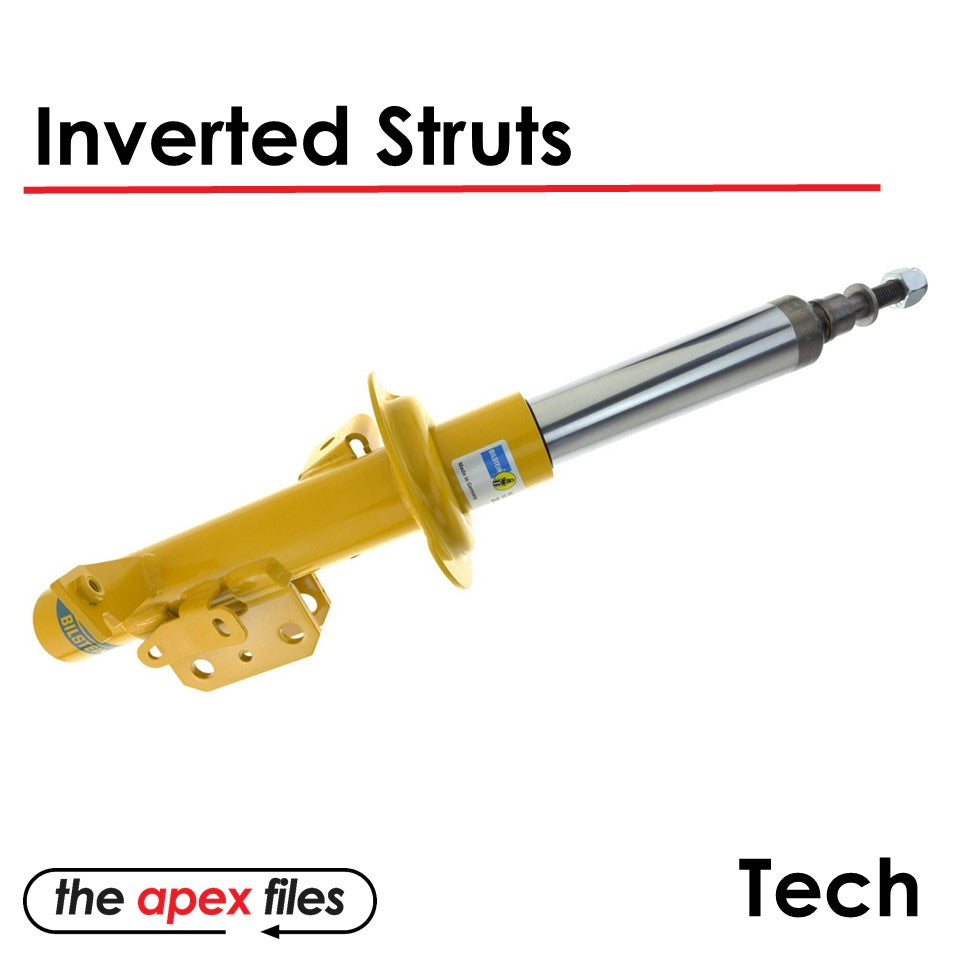Your Cart is Empty
Get on track. 2022+ BRZ/GR86 and 2022+ WRX products in stock now!
Get on track. 2022+ BRZ/GR86 and 2022+ WRX products in stock now!
Get on track. 2022+ BRZ/GR86 and 2022+ WRX products in stock now!

March 09, 2023 2 min read
We’re going to try and get through this article without too much innuendo.*
You see that thick, girthy shaft on those Bilstein struts? Well, that’s not actually the damper shaft. That’s the damper body that slides in and out of the lower part of the strut. The shaft is inside where you can’t see it and quite a bit smaller. Also true for inverted coilover struts, too.
Inverted monotube struts don’t have huge damper shafts, but it’s not all about size.
*so far so good, right?

So what’s the advantage of an inverted design? Since a strut is a structural component to the suspension, they undergo a lot of side loads compared to a double-wishbone or multi-link suspension with a shock. On higher grip tires or real rally usage, it can be more than a thinner shaft on a right-side-up monotube strut can handle. With an inverted strut, the shock body itself is handling those loads, not the shaft.
And that means that inverted struts usually don’t have very thick shafts.

Which means your inverted coilovers don’t use 46mm damper shafts. That’s marketing talk that pushes the bigger is better angle. It’s misleading.
And just using a very thick monotube damper shaft also has disadvantages, namely that they require bigger pistons and sometimes remote reservoirs to make up for the extra space a big shaft takes up inside the damper.
Getting strength from an inverted body while keeping a thinner damper shaft is the goal.
There’s also a slight reduction in unsprung weight and some protection for the damper from flying debris.
The downsides? Cost, overall weight, and in most cases there’s a little more friction. They can sometimes require more maintenance to avoid stiction (see Subaru STI rear inverted struts).
Also, you can’t invert a twin-tube strut but they are a little more robust and can run bigger shafts without some of the same drawbacks as a monotube. Inverted twin-tubes aren’t really a thing.
If you’re using monotube struts (including coilovers), it is worth considering an inverted type for high performance driving.
This is especially true for rally, drift, and when using high-grip tires.
Not a must have, but something that is worth considering.
